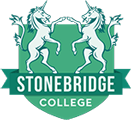Groups and Group Effectiveness (Byte Size Skills Course).
Groups and Group Effectiveness (Byte Size Skills Course)
Taylor suggested that workers were fundamentally economic animals. He also suggested that systematic soldiering, where workers came together to hold down production, would be cured when managers began to do their jobs properly, that is, to relate directly to each worker and satisfy his or her personal self-interest. For, as Watson (1987) put it, Taylorism suggests that each worker is ". . . a self-seeking, non-social individual who prefers the management to do their job-related thinking for them."
There has been a volte face in management thought on both counts. Indeed, it has been observed that the writings of Mayo created a cult of the group. We are now able, however, to put the importance of groups into their proper perspective while still recognising that they are an essential feature of organisational work patterns. One of our purposes in this session is to make this clear. Work is a social activity. There are many organisational goals that cannot be achieved by members acting independently. Given this, most individuals spend a great deal of their organisational time working with others in groups.
By the end of the course, you should be able to:
- define a group.
- distinguish between formal and informal groups.
- list the types of formal groups.
- explain the main purposes for which individuals use groups.
- list the major organisational purposes of groups and teams.
- evaluate the notion that groups develop in stages.
- explain the major determinants of group effectiveness.
- understand Belbin's notion of team roles.
- identify the symptoms of groupthink.
- show an awareness of the importance of group task and maintenance functions.
On completion of your course, you will receive a certificate:
Stonebridge Associated Colleges: Groups and Group Effectiveness (Byte Size Skills Course) Certificate
Groups and Group Effectiveness (Byte Size Skills Course) Certificate issued by Stonebridge Associated Colleges, to view a sample of the college’s award, please click here.
Professional Membership
On completion of this course you will be eligible to join the following Professional Associations(s):
On successful completion of your course your qualification is awarded. You will receive an attractively presented Diploma or Certificate issued by Stonebridge Associated Colleges, this will also allow you to use the letters SAC. Dip. or SAC. Cert. after your name.
Stonebridge Associated Colleges is one of the leading (and biggest) distance education colleges in the U.K and internationally. We have many thousands of students studying with us at any one time from locations all over the world. Our diplomas will always count towards your future, and will improve your prospects of future employment or higher level study etc. by proving that you have studied to a certain level, that you have proficiency in your chosen subjects and that you are interested in your field of choice. Education is always an investment in your future and you will find this to be the case with our qualifications in your jurisdiction.
There is no experience or previous qualifications required for enrolment on this course. It is available to all students, of all academic backgrounds.
All course fees, inclusive of all payment plans including our Premium Credit Limited option, must be settled before certification can be ordered.
*You will have access to the course for 24 months.
Introduction
Objectives
Section 1: Groups
Definition of a group
Types of groups
Purposes for which individuals use groups
Section 2: Tuckman's Model of Development
Stages of group development and maturity
Section 3: Organisational Purposes of Groups and Teams
Organisational purposes of groups and teams
Section 4: Group Effectiveness
The givens
Intervening factors
Summary
Tutor-marked Question Paper
Determinants of group effectiveness
Assessment Method
After each lesson there will be a question paper, which needs to be completed and submitted to your personal tutor for marking. This method of continual assessment ensures that your personal tutor can consistently monitor your progress and provide you with assistance throughout the duration of the course.
What's Included
- All study materials
- Study Guide
- Full Tutor and Admin support
What's Included
- All study materials
- Study Guide
- Full Tutor and Admin support
Taylor suggested that workers were fundamentally economic animals. He also suggested that systematic soldiering, where workers came together to hold down production, would be cured when managers began to do their jobs properly, that is, to relate directly to each worker and satisfy his or her personal self-interest. For, as Watson (1987) put it, Taylorism suggests that each worker is ". . . a self-seeking, non-social individual who prefers the management to do their job-related thinking for them."
There has been a volte face in management thought on both counts. Indeed, it has been observed that the writings of Mayo created a cult of the group. We are now able, however, to put the importance of groups into their proper perspective while still recognising that they are an essential feature of organisational work patterns. One of our purposes in this session is to make this clear. Work is a social activity. There are many organisational goals that cannot be achieved by members acting independently. Given this, most individuals spend a great deal of their organisational time working with others in groups.
By the end of the course, you should be able to:
- define a group.
- distinguish between formal and informal groups.
- list the types of formal groups.
- explain the main purposes for which individuals use groups.
- list the major organisational purposes of groups and teams.
- evaluate the notion that groups develop in stages.
- explain the major determinants of group effectiveness.
- understand Belbin's notion of team roles.
- identify the symptoms of groupthink.
- show an awareness of the importance of group task and maintenance functions.
On completion of your course, you will receive a certificate:
Stonebridge Associated Colleges: Groups and Group Effectiveness (Byte Size Skills Course) Certificate
Groups and Group Effectiveness (Byte Size Skills Course) Certificate issued by Stonebridge Associated Colleges, to view a sample of the college’s award, please click here.
Professional Membership
On completion of this course you will be eligible to join the following Professional Associations(s):
On successful completion of your course your qualification is awarded. You will receive an attractively presented Diploma or Certificate issued by Stonebridge Associated Colleges, this will also allow you to use the letters SAC. Dip. or SAC. Cert. after your name.
Stonebridge Associated Colleges is one of the leading (and biggest) distance education colleges in the U.K and internationally. We have many thousands of students studying with us at any one time from locations all over the world. Our diplomas will always count towards your future, and will improve your prospects of future employment or higher level study etc. by proving that you have studied to a certain level, that you have proficiency in your chosen subjects and that you are interested in your field of choice. Education is always an investment in your future and you will find this to be the case with our qualifications in your jurisdiction.
Introduction
Objectives
Section 1: Groups
Definition of a group
Types of groups
Purposes for which individuals use groups
Section 2: Tuckman's Model of Development
Stages of group development and maturity
Section 3: Organisational Purposes of Groups and Teams
Organisational purposes of groups and teams
Section 4: Group Effectiveness
The givens
Intervening factors
Summary
Tutor-marked Question Paper
Determinants of group effectiveness
Assessment Method
After each lesson there will be a question paper, which needs to be completed and submitted to your personal tutor for marking. This method of continual assessment ensures that your personal tutor can consistently monitor your progress and provide you with assistance throughout the duration of the course.
What's Included
- All study materials
- Study Guide
- Full Tutor and Admin support
What's Included
- All study materials
- Study Guide
- Full Tutor and Admin support
Our Advisors.
Our team of course advisors are keen to help.
Call us now on 0121 392 8288
Alternatively, please complete the form below and we’ll get back to you as soon as possible.
80,000 learners.
650 courses.
flexible payment
options.
Our student support team is here for you.























